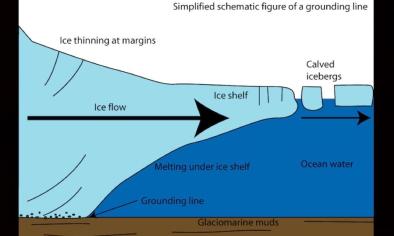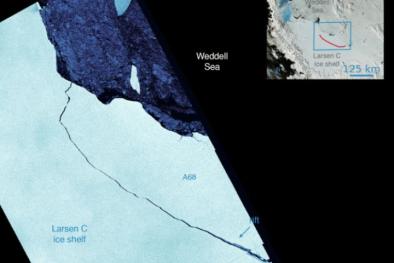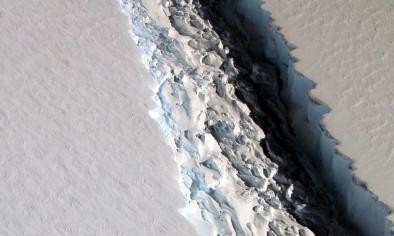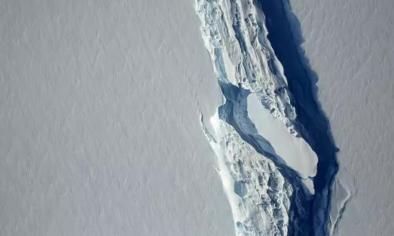The Larsen C Rift is Racing to Its Conclusion
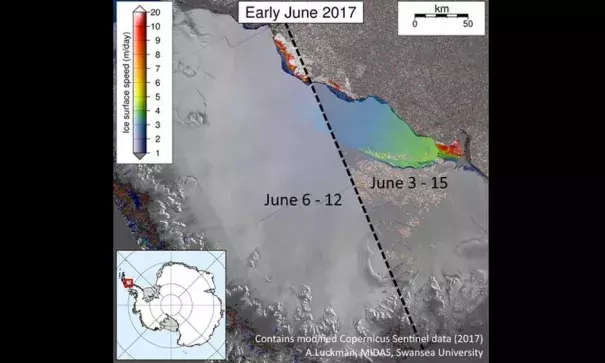
A rift has torn the Larsen C ice shelf asunder and now the outside edge of the ice is moving at an unprecedented pace. When it breaks off, it will become one of the largest icebergs ever recorded. The crack is just eight miles away from breaking off what will likely be the second-biggest iceberg observed. The massive hunk of ice has already started to wiggle like a loose tooth. That includes ice near where the crack began, which is moving at an unprecedented speed of 33 feet per day. In the world of glacial-paced ice, that’s the equivalent of an all-out sprint.
“In another sign that the iceberg calving is imminent, the soon-to-be-iceberg part of Larsen C ice shelf has tripled in speed to more than 10 meters per day between 24th and 27th June 2017,” the scientists wrote on their Project MIDAS site. “The iceberg remains attached to the ice shelf, but its outer end is moving at the highest speed ever recorded on this ice shelf.”
The speed-up is the latest sign that an iceberg is truly on the brink of forming. Project MIDAS researchers have been monitoring the state of the ice shelf since October 2015. During that time, they’ve observed periods of massive growth in the length of the crack across the ice shelf, widening to the point where you could lay the Empire State Building on its side to form a bridge across the chasm. More recently, a new branch sprouted, further warping the ice.
...
The Larsen C rift is driven by natural processes, but climate change could play a role in what comes next for the ice shelf, either from warm water undercutting what’s left of the ice shelf or warm air causing melt ponds on the surface. Both would weaken the remaining ice and make it more susceptible to melt and possibly collapse, though it will take years for researcher to tease those signals out.
Related Content
